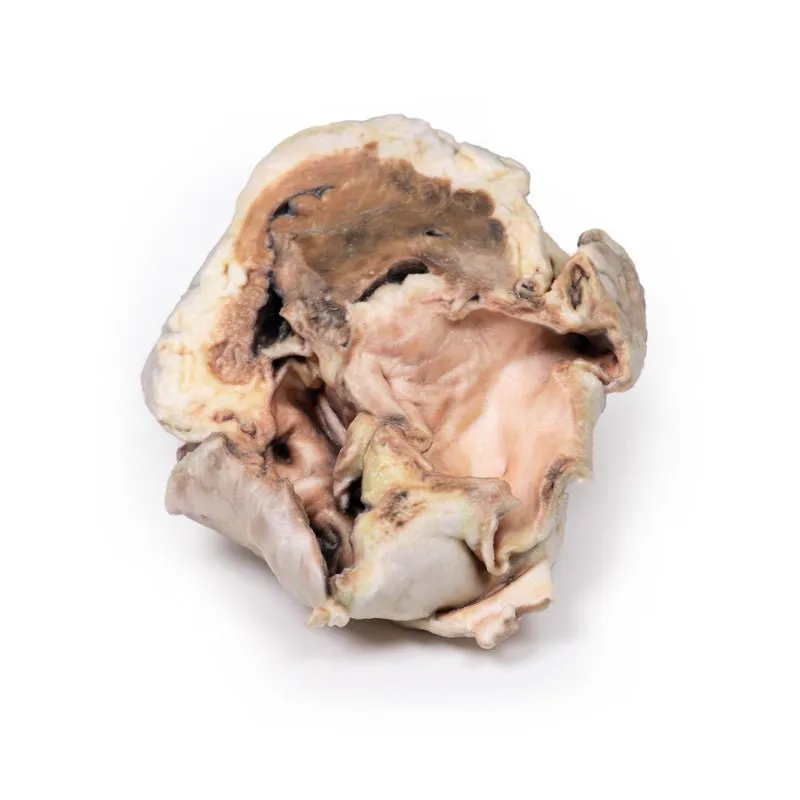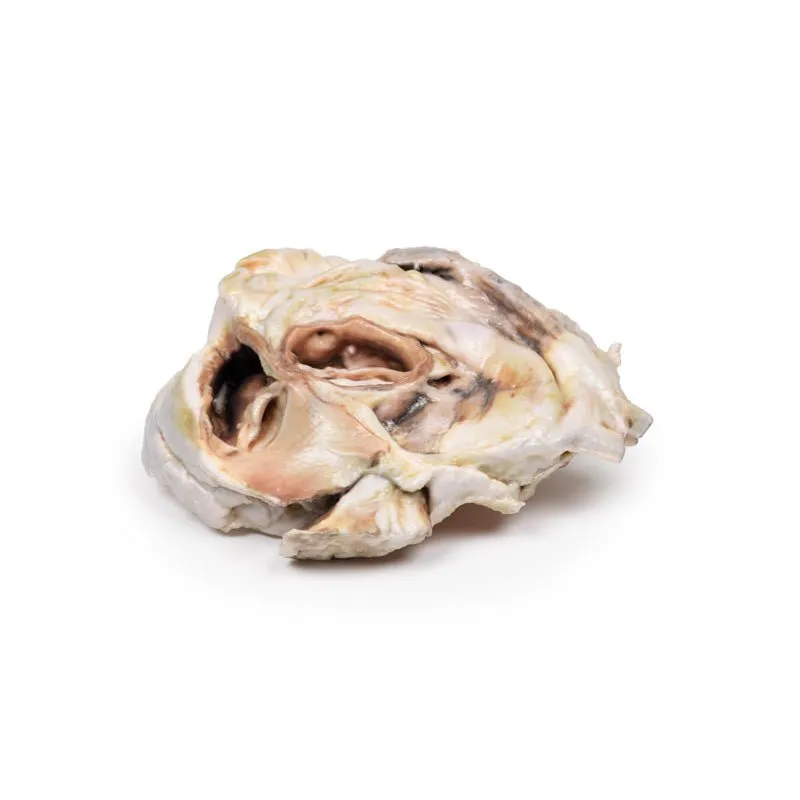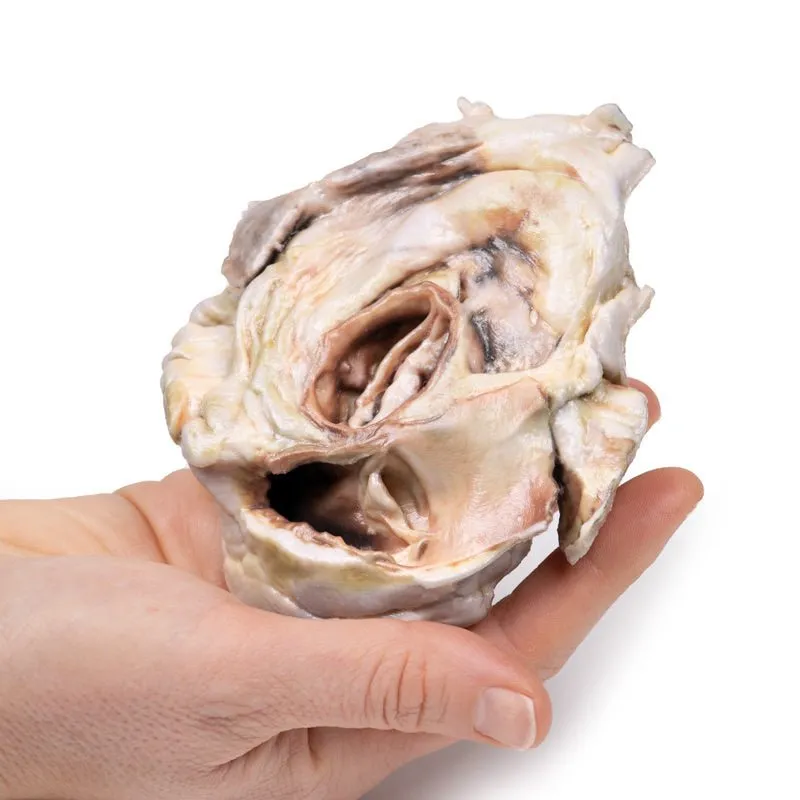3D Printed Calcified Aortic Valvular Stenosis Biscuspid Valve
Clinical History
There is no clinical history for this specimen.
Pathology
The specimen is partial horizontal 1.5cm slice through the plane of the left atrium whose smooth
internal lining together with the left auricular appendage and part of the left ventricle are visible on the
inferior aspect. On the superior aspect the pulmonary trunk (and part of the pulmonary tricuspid valve) and
aorta, including the affected abnormal bicuspid valve, are clearly discernible. Calcified aggregations or
thickenings on the opposing margins of the valve can be seen from this upper perspective. There is also a region
of calcification on one of the cusps of the pulmonary valves.
Further information
Bicuspid aortic valve is a common congenital abnormality that is often not detected into
adulthood. Indeed, it is the most common congenital anomaly of the heart. Aortic valve stenosis can range from
mild to severe, and signs and symptoms generally develop when narrowing of the valve is severe. Some people with
aortic valve stenosis may not experience symptoms for many years. Signs and symptoms may include abnormal heart
sound (heart murmur), radiating chest pain (angina), shortness of breath and chest pain, especially during times
of increased activity, heart palpitations — sensations of a rapid, fluttering heartbeat. The heart-weakening
effects of aortic valve stenosis may lead to heart failure. Heart failure signs and symptoms include fatigue,
shortness of breath, and swollen ankles and feet.
When the aortic valve is narrowed, the left ventricle has to work harder to pump a sufficient amount of blood into the aorta and onward to the rest of the body. This can cause the left ventricle to thicken and enlarge. Eventually the extra work of the heart can weaken the left ventricle and the heart overall, with it ultimately not being able to function properly (heart failure), causing other downstream problems.
Calcium deposits build up on the valve particularly those with a congenitally abnormal aortic valve, such as a bicuspid aortic valve resulting in stiffening of the valve cusps. This stiffening narrows the aortic valve lumen and thereby increases the blood flow.
Download:GTSimulators by Global Technologies
Erler Zimmer Authorized Dealer

 Cart(
Cart(













